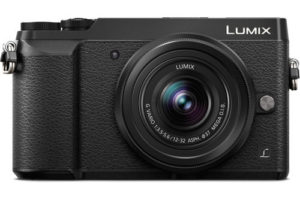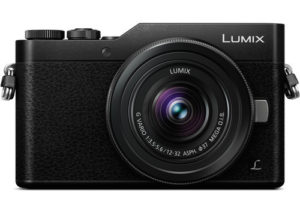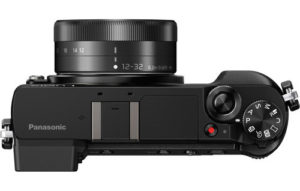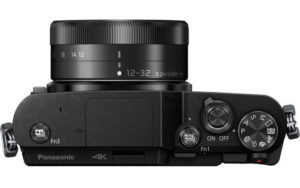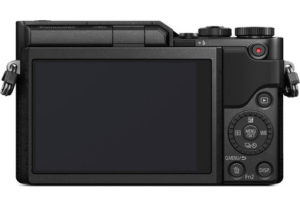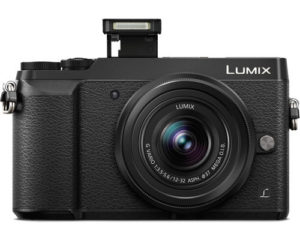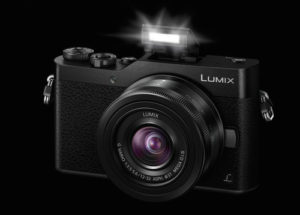Update: our complete GX85 vs GX850 comparison is now online!
In 2016, Panasonic decided to update the naming scheme of its Lumix range to better reflect the target audience and styling of their cameras. For example, all flat-topped cameras are now called “GX” and are followed by a series of digits that distinguish the level of the intended user. One digit is for professional use, two is for experts, three is for amateurs and four is for complete beginners.
In this comparison preview, we will be looking at how the GX85, the latest “expert” model, and the GX850, the latest “amateur” model, compare based on their specifications. While many of their characteristics are the same, including the 16MP Micro Four Thirds sensor and 4K / Full HD video capabilities, there are a number of differences deserving of attention. As always, please bear in mind that this is a preview rather than a complete comparison, and will be updated if we have the chance to test the two models side-by-side!
Note: the GX85 is known as the GX80 in Europe and the GX7 II in Japan, while the GX850 is known as the GX800 in Europe and the GF9 in Japan.
Ethics statement: The information supplied in this article is based upon the official specifications found on the Panasonic website and our personal experience with Panasonic cameras. We were not asked to write anything about these cameras, nor were we provided any compensation of any kind. Within the article, there are affiliate links. If you decided to buy something after clicking the link, we will receive a small commission. To know more about our ethics, you can visit our full disclosure page. Thank you!
1. Body design
Although both cameras feature a flat-topped design, the GX85 is larger (122 x 70.6 x 43.9 mm vs. 106.5 x 64.6 x 33.3 mm) and heavier (426g vs. 269g) than the GX850. However, both are compact enough to fit inside a jacket pocket with a small prime attached.
The GX85, being the more advanced model of the two, also has more external controls. In addition to two dials that change the exposure, it also has a hot shoe for external accessories, an SD memory card slot instead of a Micro SD card slot, and nine function buttons, which is three more than the GX850.
While the GX85 comes in just two colour combinations (pure black and black/silver), the GX850 comes in a total of four: pure black, silver/black, brown/black and orange/black.
2. Viewfinder
The larger body of the GX85 also makes room for a built-in electronic viewfinder (EVF), while the GX850 solely relies on the LCD monitor.
Found on the left-hand side of the body, this viewfinder is based on field sequential technology. This means that even though it has a declared resolution is 2.76 million dots, it is not native. Instead, it is a combination of the red, green and blue dots that are displayed very rapidly one after the other. Although the perception of high resolution is there, there are also unwanted downsides such as a rainbow effect during rapid panning or in backlit situations.
Other specifications include 0.70x magnification, a 17.5mm eye-point, and a 100% field of view.
One complaint about the GX85’s EVF concerns its 16.9 aspect ratio. It is useful when shooting video but can be more irritating for still photography. This is because the left and right areas of the screen within the EVF are blacked out when using the native 4:3 format, rendering the image smaller than normal.
3. Tilting touchscreen
The rear touchscreen is another significant difference between these two camera models, and this time around, it is the GX850 that has more to offer.
By swivelling the screen up 180 degrees, you can activate the camera’s “self shot mode” which provides a number of fun options for the avid selfie taker.
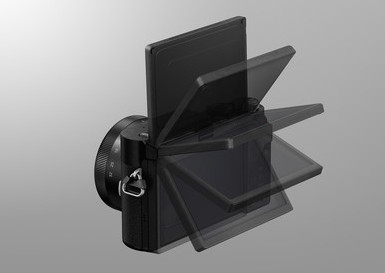
There is a 4K selfie mode that lets you extract the perfect selfie from 4K footage, Panorama selfie shooting, Background Control with a choice between a clear or defocused background, Slimming and Soft Skin modes in 10 levels, and a number of creative filters. What’s more, with Face Shutter or Buddy Shutter, the camera automatically releases the shutter when one or two faces enter the composition.
The touchscreen of the GX85 can tilt down 45 degrees and up 90 degrees but it lacks all the “self shot” modes of the GX850.

4. In-body stabilisation
The GX85 was the very first Panasonic camera to feature 5-axis in-body stabilisation. It allows you to take hand-held shots down to around 1 second with non-stabilised glass (such as the vast majority of Olympus M.Zuiko lenses) and works with adapted lenses as well so long as you manually input the focal length.
With certain Lumix lenses, you have access to Dual I.S. whereby the camera combines the sensor and optical stabilisation, letting you use even slower shutter speeds. (To find out more about Dual I.S., you can check out our complete comparison between the GX85 and G85.)

5-axis sensor shift and Dual I.S. also work for video recording. By activating electronic stabilisation for video, the camera crops the sensor a little more but delivers better results for static shots.
The GX850 lacks internal stabilisation and as such, relies on the optical stabilisation of Lumix G lenses. For video, this means you may end up with more jittery footage when using O.I.S. (Dual I.S. minimises the jitter effect.) With non-stabilised Micro Four Thirds lenses, you won’t have any kind of image stabilisation.
5. Burst shooting
Another difference is the burst shooting capabilities of the two cameras. The GX85 is capable of speeds up to 8fps in S-AF or 6fps in C-AF or with Live View, while the GX850 clocks in at 5.8fps in S-AF, 5fps in C-AF, and 4fps with Live View. Both can shoot up to 10fps with the electronic shutter.
6. Buffer capacity
Related to the topic of burst shooting is the buffer capacity of the two cameras. Here, the difference is much smaller but it is worth mentioning because the GX850 actually outperforms its big brother, being able to shoot up to 15 consecutive RAW files rather than just 13. That said, both cameras are capable of shooting in excess of 100 Fine JPGs in a burst.
7. Aperture and focus bracketing
Four bracketing modes in total are found on the GX85: exposure, white balance, aperture and focus bracketing. Although the GX850 has the former two, it lacks the aperture and focus bracketing.
Aperture bracketing allows you to capture a burst of images at various depths of field, whereas focus bracketing takes up to 999 frames in a burst, each with a slightly different focus point, which can later be merged into a single image. The latter is particularly useful for macro photography because you can combine these frames into a finished image with deep depth of field.

8. 4K Photo
4K Photo is one of Panasonic’s most well-loved functions, as it allows you to select and extract specific 8MP JPG frames from 4K footage shot at 30fps. Useful for capturing fleeting moments, such as a bird taking off or a dog jumping to catch a ball, they are classified as follows:
- 4K Burst: The standard 4K Photo mode. Allows you to shoot up to 29 minutes and 59 seconds of 4K footage at 30fps. You must hold down the shutter button to record.
- 4K Start/Stop: Start recording by pressing the shutter button, and stop recording by pressing it a second time.
- 4K Pre-Burst: Records 30 shots before and after you press the shutter button, for a total of 60 frames.
- Post Focus: Choose your focus point after taking the shot.
- Post Focus with Focus Stacking: Stack your images into one shot with a deeper depth of field.
- Light Composition: Combines several frames into one image, using just the brightest pixels.
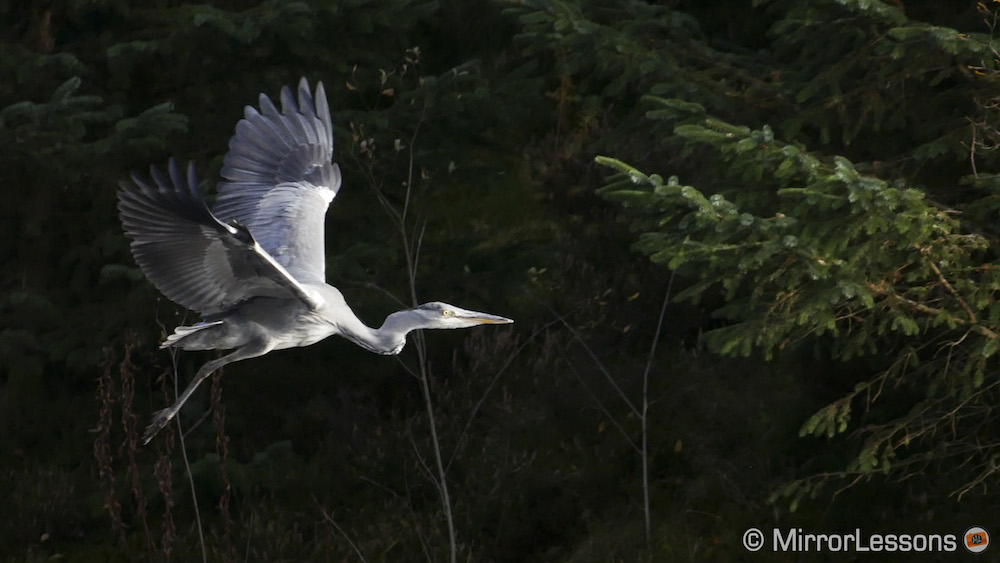
Though the 4K Photo functions are, by and large, identical on the two cameras, the GX85 has the advantage of a “loop mode” which, when enabled, saves the five most recent 2-minute video clips, erasing any previous footage. This means that you can take hours of 4K footage without wasting space on your memory card. The GX850, on the other hand, has the aforementioned selfie 4K modes.
9. Built-in flash
Both cameras sport a built-in TTL pop-up flash on the top plate but that of the GX85 is slightly more powerful (GN6.0 equivalent versus GN5.6 equivalent). It can sync up to 1/160s, which is significantly faster than the 1/50s of the GX850, and the flash output adjustment is also different: 1/3EV steps with ±3EV instead of just ±2EV.
10. Battery life
The final difference concerns the battery life of the two cameras. Since the GX85 takes a slightly bigger battery, it is also capable of more shots on one charge – 290 versus 210 to be exact.
Conclusion
As the naming already reveals, the GX85 is better suited to expert users who, though not professional in the sense that they may not earn money from their photography, have the necessary knowledge and experience in the field to make the most out of the camera’s rich array of features. This is evidenced by the inclusion of a built-in electronic viewfinder, the additional controls on the body, the faster burst speeds, and the excellent 5-axis in-body stabilisation.
As for the GX850, the 180-degree tilting screen with its many selfie-orientated features says it all. This camera has been designed for amateurs (or even beginners) who want to take a step up from the image quality of their smartphone without investing in something too large, complicated or expensive for their needs.
That said, there is no reason the GX850 couldn’t become a second body for an advanced user in search of a portable and inexpensive solution. After all, it costs around $200 less but has same image and video quality as the GX85 (and most other Micro Four Thirds cameras) and most additional features, including 4K Photo.
Check price of the Lumix GX85 / GX80 on
Amazon | Amazon UK | eBay | B&H Photo
Check price of the Lumix GX850 / GX800 on
Amazon | Amazon UK | B&H Photo | eBay

